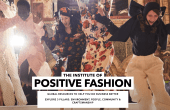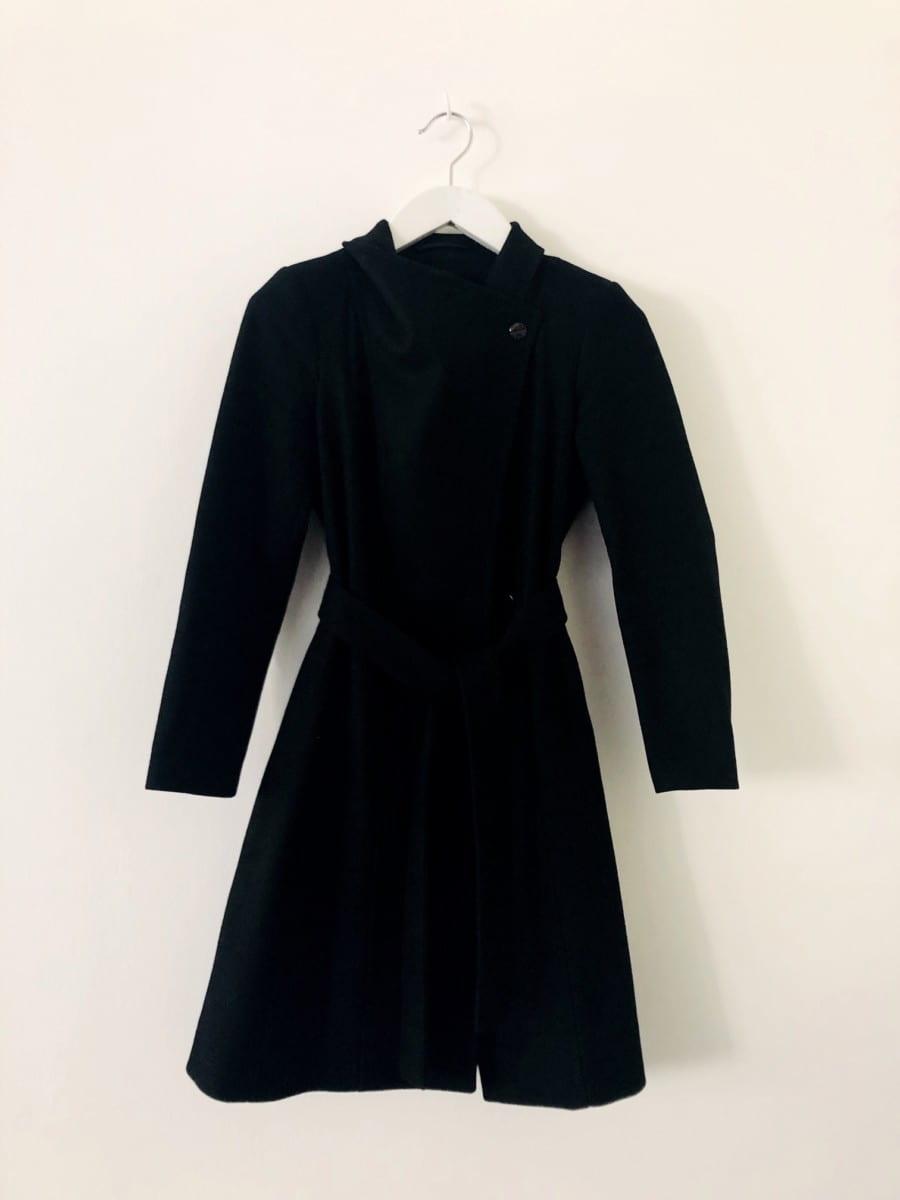Amy de la Haye is our Rootstein Hopkins Chair of Dress History & Curatorship at London College of Fashion (LCF). After working as a Curator of Twentieth Century Dress at the Victoria and Albert Museum (V & A), she joined us LCF in 2000 to become Reader in Material Culture and Fashion Curation. Since 2007 she has been Joint Course Director (with Judith Clark) for our exciting MA Fashion Curation course. She is an accomplished writer, I have enjoyed reading many of her books from Chanel to The House of Worth. Amy has written extensively on fashion history and has recently released a new book London Couture: British Luxury 1923-1975. I spoke to her about my first Unseen Fashion discipline, curation, and what it means to her.
What was your route into curation?
I studied for a degree in design history at Brighton University, specialising in dress history and was completely inspired by the tutor Lou Taylor, and just fell in love with the subject. I then did a Masters in Cultural History at the Royal College of Art where I wrote a 40,000 thesis about cheap levels of ready-to-wear fashion in the 1920s. After that, the two main job opportunities were teaching and museums and I was determined not to do either, although I didn’t know what I was going to do. But, I had a very fixed idea of what working in a museum would be like and at the time I didn’t really realise what a curator did or what was involved.

Amy studying an Edwardian dress as part of a new project on perished dress
People do have a certain stereotype of what a curator is, maybe just lurking in the back of a museum…
I thought it would be very documentation based, I certainly wasn’t aware of the possibilities, so it took me a while to find work – it seemed like it was just teaching, which I forced myself to do, even though I was scared beyond words.
Then I applied for a job as a part-time assistant curator at Hove Museum in 1987 and was delighted to be awarded it. I worked there from 1987 to September 1991. At Hove there was just a full-time curator and me, and basically we had to do everything. It gave me a real grounding in a lot of things, from 18th century glass and painting, to jewelry and toys, not to mention the contemporary crafts collection, which was my real interest. And, in every aspect of staging an exhibition.
How did the job at the V&A come about?
Well, I took up any freelance work that I could and Lou Taylor had been asked to review a book called Fashion Source Book that a packaging agent were printing for another publisher. Basically the book was terrible, but if they missed the deadline they incurred a huge fine. So, they needed this whole book to be rewritten and all the pictures researched in 5 weeks and Lou said ‘ask Amy de la Haye to do it’! Well, I nearly killed myself, but I finished it and I subsequently applied for a job as Curator of Twentieth Century Dress at the V&A. I was not sure they would even interview someone who had not previously worked with a dress collection. The interview was terrible (it included giving a seven minute presentation in front of the other applicants) . I could not believe it when I was offered the job. I later found out Valerie Mendes who was head of department had seen my book and wondered if I would apply, so that was my lucky break! I did that job from 1991 to 1999 and it was just the most amazing and extraordinary experience, curating major exhibitions, as well as lots of smaller ones in the dress gallery and having keys that gave me access to all the cupboards and drawers full of objects.

When I had my son Felix it became obvious that I could no longer spend nearly four hours a day commuting to London and, without looking actively, I was offered lots of work, including working as Creative Consultant with the fashion designer Shirin Guild and as a research fellow at LCF, one day a week which has – over the last sixteen years – gradually crept up to now being full time. The job here has allowed me to work in a variety of curatorial contexts (including for Selfridges and Jaeger) and for different publishers and – ultimately – permitted me to reflect and critically develop my attitude towards the discipline.
Over that time how do you think the role of a curator has developed?
I suppose this is something I feel quite strongly about because when I started working with dress it certainly wasn’t a fashionable occupation and now being a fashion curator is ultra-fashionable. When I started at the V&A in 1991, within the hierarchy off curatorial departments, dress was still perhaps marginalized, but it was also undeniably popular. However, it’s now escalated so that in the last 5/10 years curating has become popularized. People say they curate shop windows, curate conferences, magazines – it’s not my definition of a curator.
It must be getting harder to distinguish between the people curating exhibitions from those who claim to be curating all kinds of things…
The curating doesn’t even have to be done in a museum, but it has to be rigorous and it’s about critically engaging with objects – even digitally – it’s about interpretation, not consumption as far as I’m concerned.
Why do you think fashion exhibitions are so popular now?
Partly because fashion exhibitions have become fashionable and partly because everyone wears clothes and everyone can make an opinion. When I worked at the V&A it was quite hushed and I used to say the dress gallery used to be the one gallery where you could find your way to blindfolded, because it was the one gallery where everyone would feel confident to really talk or make an opinion. We can all relate to clothes, we can all comment.

Clothes also touch us on very many levels, they can be glamorous or hauntingly moving. If you think about clothes as evidencing lost lives – if you think about Christian Boltanski’s work and the memorial museums which have piles of shoes, they’re hauntingly moving, and their multi-sensorial; they touch you emotionally on many levels.
So is this part of the reason you chose clothes as your medium for historical research?
I was always interested in dress from a very young child, what they looked and felt like, not just from the glamorous perspective but also the stories they can tell.
At the V&A the emphasis is upon design and you ideally want the clothes pristine as they left the designers studio, but increasingly I’ve become interested in worn clothes partly because they become imprinted with wear in a way you don’t imprint other objects, they become imbued with your smell and you alter their form – if someone dies the hardest thing to give away is their clothes.
I’ve always said I’m an object led curator and I’m inspired by objects but I think increasingly that actually I’m interested in people’s lives – women’s in particular so I’m unashamedly interested in women’s dress – I would argue that perhaps clothes are more poignant and eloquent than other media to tell stories about lives lived.
It must be a challenge to make sure clothes can be experienced in a multi-sensorial way in exhibitions because clothes are meant to be worn on an animate, living body, but you’re often presenting them static on a hanger?
Well that’s the constant dilemma of being a curator, but there are different strategies where people have got round that. Jeffrey Horsley our ex-PhD student – who has just been appointed as the Centre for Fashion Curation’s new post doc – has done a recent exhibition on Yohji Yamamoto which was interesting, as he invited visitors to select clothes fro a model to wear That was a non-museum solution, you can’t do that type of exhibition in the context of the museum because once garments come in they’re never allowed to be worn again. And so, you have to do different things with them, you can suggest movement, you have to evoke, imagine and suggest – you can use literature from the period, you’ve got diaries and letters or practical solutions such as measuring a court robe and comparing it to the width of a door…

Thinking about Jeffrey do you think the role of a fashion curator is limited to museums, should they look outside museums?
The one thing which is exciting about our profession is that when I entered it, the work was in museums and more specifically, in museums with dress collections, whereas now the employment opportunities have expanded incredibly. Now are graduates from our MA course have gone into fashion companies and done archiving projects. There’s lots of museums and galleries like Somerset House, where they don’t have a collection but they do fashion exhibitions. There are all sorts of commercial opportunities as well, Selfridges have been quite innovative in the exhibitions they have commissioned, including several which my colleague, and co-director of the Centre, Judith Clark curated (Brittanica 1951-1953, Washed Up and Shoes) – really extraordinary displays that were thought provoking and strikingly beautiful.
The Centre for Fashion Curation has so many professionals that have had significant industry experience – that must be good for the students studying here?
Judith (Clark) and I do most of the teaching, which is a good balance because Judith was trained as an architect and I was trained as a historian. We are distinctive; although we agree on many things, our work is ultimately different; Judith thinks in terms of space and I start with objects, but I think that’s fascinating for students. But all of our CfFC team have really good experience in the industry and we often get students involved with exhibitions we are creating which is exciting for them.
And it’s not just graduates coming to the Centre, we also get a lot of people coming to do the MA mid-career, looking for a change of direction. We have had the Head of The Royal School of Needlework study with us, and another mature student at the moment who works on BBC Radio 4 Front Row Programme.

I also saw that you’ve written quite a lot of books, and you actually just released another just this month. Do you consider writing as part of your role?
Yes I write books and curate exhibitions and what unites my work is an emphasis on objects; whatever I write it involves constructing a story of an archive or a collection, or it will be creating narratives around a group of objects
I really love writing, I’ve had to work at it, and still do, but I really like the telling of the story and I enjoy the craft of writing.
I also like the balance of writing and curating. Curating is a team endeavour and it’s a much more physical running around and putting things together with lots of different people, which I love, but I also really like the solitude of working for a few days at home on my own, thinking my own thoughts, telling my own story – I couldn’t do just one or just the other.
Amy’s latest book ‘London Couture: British Luxury 1923-1975’ – (which she co-edited with Edwina Ehrman) is the first in-depth examination the capital’s couture industry – commissioned authors from around the world to look at what makes it unique. Five LCF alumni wrote chapters and three assisted Amy with her research: PhD student and Centre manager Ben Whyman wrote a chapter on Hardy Amies. The beautiful book was published earlier this month by V&A Publications.




